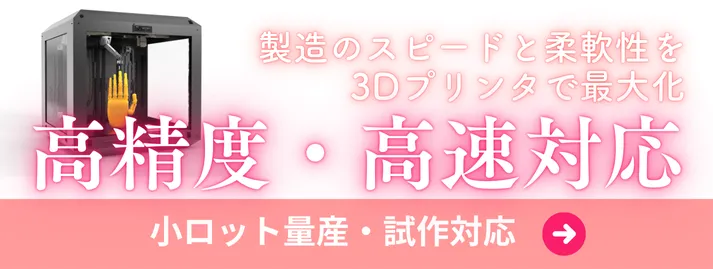- お役立ち記事
- Detailed Guide to the Cardboard Manufacturing Process and Workflow Management
月間76,176名の
製造業ご担当者様が閲覧しています*
*2025年3月31日現在のGoogle Analyticsのデータより

Detailed Guide to the Cardboard Manufacturing Process and Workflow Management

目次
Understanding Cardboard Manufacturing
Cardboard is a versatile material extensively used in packaging and shipping industries.
It’s highly praised for its strength, durability, and recyclability.
Understanding the manufacturing process of cardboard is essential for companies aiming to optimize their production and improve workflow management.
Production Overview
The production of cardboard involves several stages, beginning with the selection of raw materials.
Most cardboard is made from a combination of wood pulp, recycled paper, and virgin fibers.
The quality of these materials significantly impacts the durability and strength of the final product.
Pulping Process
The first step in the manufacturing of cardboard is the pulping process.
Raw materials are mixed with water and broken down into a fibrous slurry.
This slurry is then further refined to remove any larger particles or impurities.
During this stage, the fibers are treated to enhance their bonding abilities, making the finished cardboard strong and durable.
Sheet Formation
Once the pulp is ready, the next stage is sheet formation.
The slurry is spread onto a mesh conveyor belt that allows excess water to drain away.
As the water drains, the fibers start to bind together, forming a continuous sheet of paper.
This sheet can be customized in thickness depending on the intended use of the cardboard.
Pressing and Drying
After the sheet formation, the wet sheets go through a pressing process.
This involves passing them through a series of rollers to remove additional moisture and improve the density of the cardboard.
After pressing, the sheets enter a drying section where they are passed over heated rollers, further reducing moisture content and ensuring uniform thickness.
Corrugation
For corrugated cardboard, the sheets go through an additional corrugation process.
Corrugation involves passing one or more paper sheets through corrugating rolls.
These rolls create a fluted pattern that provides the cardboard with increased strength and cushioning properties.
The corrugated medium is then glued between flat linerboards, forming the distinctive corrugated cardboard structure.
Trimming and Slitting
Once the cardboard structure is formed, it needs to be prepared for specific uses.
This involves trimming and slitting to meet the required dimensions and specifications.
Precision cutting machines ensure that the sheets are cut with accuracy, minimizing waste and maximizing efficiency.
Quality Assurance
Quality control is a crucial step in the cardboard manufacturing process.
Samples are taken at various stages to check for consistency, strength, and visual defects.
Tests also include measurements for thickness, burst strength, and moisture content.
Quality assurance ensures that the final products meet industry standards and customer expectations.
Workflow Management in Cardboard Manufacturing
Optimizing workflow management in a cardboard manufacturing facility is essential for maximizing productivity and reducing production costs.
Raw Materials Management
Effective management of raw materials is fundamental to successful manufacturing.
Companies must maintain an inventory system that ensures a steady supply of high-quality raw materials.
This involves establishing strong relationships with suppliers and implementing a just-in-time inventory system to reduce storage costs.
Automation and Technology
Automation plays a significant role in enhancing efficiency in the cardboard manufacturing process.
Modern facilities employ state-of-the-art machinery for pulping, sheet formation, and corrugation.
This reduces manual labor and increases production speed.
Incorporating technologies like IoT and AI can further streamline operations, providing real-time data for better decision-making and predictive maintenance.
Lean Manufacturing Principles
Applying lean manufacturing principles helps in reducing waste and enhancing productivity.
By adopting practices like 5S (Sort, Set in order, Shine, Standardize, Sustain) and continuous improvement strategies, plants can operate more efficiently, reducing downtime and defects.
Employee Training and Safety
Well-trained employees are vital for any manufacturing process.
Regular training sessions and workshops help workers stay updated with the latest technologies and best practices.
Furthermore, emphasizing workplace safety is crucial to prevent accidents and ensure a smooth workflow.
Environmental Considerations
With growing emphasis on sustainability, cardboard manufacturers can benefit by adopting environmentally friendly practices.
This includes recycling waste materials and reducing water and energy consumption.
Sustainable practices not only help in reducing the carbon footprint but also appeal to environmentally conscious consumers.
Conclusion
Understanding the detailed processes involved in cardboard manufacturing and effectively managing the workflow are key components in producing high-quality products.
By focusing on quality assurance, embracing technological advancements, and adopting sustainable practices, manufacturers can enhance their operational efficiency and meet the demands of the modern market.
With proper workflow management, companies can remain competitive while delivering the reliability and strength that cardboard is known for.
 資料ダウンロード
資料ダウンロード
QCD管理受発注クラウド「newji」は、受発注部門で必要なQCD管理全てを備えた、現場特化型兼クラウド型の今世紀最高の受発注管理システムとなります。
 ユーザー登録
ユーザー登録
受発注業務の効率化だけでなく、システムを導入することで、コスト削減や製品・資材のステータス可視化のほか、属人化していた受発注情報の共有化による内部不正防止や統制にも役立ちます。
 NEWJI DX
NEWJI DX
製造業に特化したデジタルトランスフォーメーション(DX)の実現を目指す請負開発型のコンサルティングサービスです。AI、iPaaS、および先端の技術を駆使して、製造プロセスの効率化、業務効率化、チームワーク強化、コスト削減、品質向上を実現します。このサービスは、製造業の課題を深く理解し、それに対する最適なデジタルソリューションを提供することで、企業が持続的な成長とイノベーションを達成できるようサポートします。
 製造業ニュース解説
製造業ニュース解説
製造業、主に購買・調達部門にお勤めの方々に向けた情報を配信しております。
新任の方やベテランの方、管理職を対象とした幅広いコンテンツをご用意しております。
 お問い合わせ
お問い合わせ
コストダウンが利益に直結する術だと理解していても、なかなか前に進めることができない状況。そんな時は、newjiのコストダウン自動化機能で大きく利益貢献しよう!
(β版非公開)









